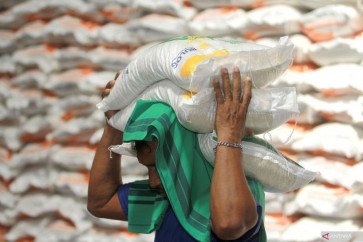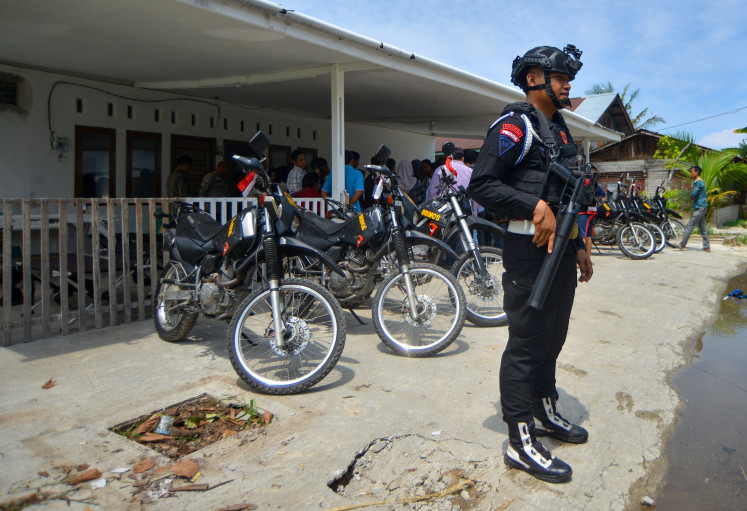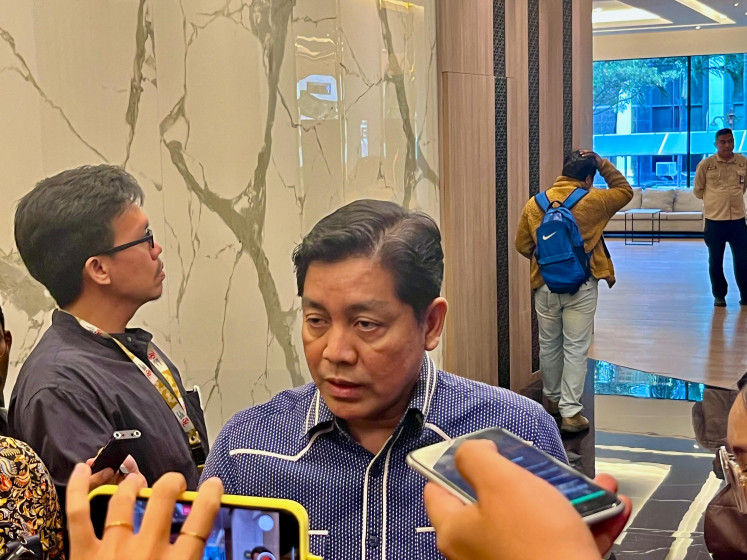Popular Reads
Top Results
Can't find what you're looking for?
View all search resultsPopular Reads
Top Results
Can't find what you're looking for?
View all search resultsDidi Kasim: Living out his dream
Dream comes true: Didi Kasim had dreamed of working at National Geographic ever since he was a kid, and 14 years ago that dream became a reality
Change text size
Gift Premium Articles
to Anyone
D
ream comes true: Didi Kasim had dreamed of working at National Geographic ever since he was a kid, and 14 years ago that dream became a reality. (Courtesy of Taman Nasional Matalawa, Sumba)
Every kid has grandiose dreams of what they want to be when they grow up. For some, it is becoming a superhero. For others, it is an astronaut or a professional athlete.
The vast majority of those dreams never materialize into anything other than abstract, wishful thinking. Didi
Kasim, however, is part of the small minority of people who were able to turn their childhood dreams into reality.
Didi’s hobbies growing up, first in Sumatra and then in Jakarta, almost exclusively lay outdoors.
He could often be found biking, hiking and climbing mountains and he knew from a very young age that he wanted his job to include exploring nature. Right around that time, he discovered National Geographic.
The bright yellow bordering that has been the calling card of National Geographic for more than 100 years has captured the hearts and minds of people of all ages.
For Didi, the TV specials that National Geographic released when he was a child transported him all over the world. While watching the people on those specials, he realized his hobby could be a legitimate career path and the yellow border became something to strive for.
“I thought if I could have my hobby as my job, it would be wonderful for me,” Didi told The Jakarta Post.
Before he even realized what a job at National Geographic would entail, he knew he wanted to somehow get involved. The only problem was that National Geographic was a world away from where he was.
After graduating from college in Australia, Didi and a few friends started an advertising company in Jakarta attempting to convince clients that they would receive more personal service than the larger advertising companies.
However, he soon found that advertising was a dog-eat-dog world and one that he no longer had any desire in pursuing. That venture only lasted about a year.
“Something in me was saying, ‘I don’t belong here’,” Didi said.
Didi then got a step closer to his dreams when he helped to create a soccer magazine with his friend that was appropriately named Soccer. Building a magazine from the ground up gave Didi important insight into how the world of magazines works.
However, he never took his eyes off the ultimate prize and he began pressing Kompas daily to consider creating a National Geographic branch in Indonesia. Kompas management needed no convincing on their end as they immediately saw it as a fantastic opportunity. The ones who needed convincing were around the globe in Washington, DC
The process of becoming a National Geographic global branch is a grueling one. Anything that dons the yellow border needs to be held up to National Geographic standards.
“They are very concerned about their final products,” Didi said. “It was almost like an exam for us.”
People from both sides traveled back and forth between Washington, DC and Jakarta, making sure that Didi and his team had the proper printing capabilities and overall wherewithal to produce a quality magazine.
Living his dream: When he’s not in the National Geographic Indonesia offices in Jakarta, his work in the field takes Didi Kasim all over the archipelago. (Courtesy of Fae Lubis)National Geographic Indonesia was finally launched in 2005 after two years of inspection and guidance. However, for the next few years, they were not allowed to produce any of their own stories. The content was solely taken from the United States and translated into Bahasa Indonesia.
The time and effort it takes to produce a National Geographic story, which often takes months of planning, was impossible to attain at first. Didi worked as an art director in the early years and even though his team members weren’t able to produce their own content right away, he was ecstatic to have achieved his boyhood dream.
“It was just an honor and a privilege to publish this magazine in Indonesia,” Didi said.
It also helped that he could see into the future for him and his team by talking with other global branches, such as in Japan, and realizing what their path would soon be.
When 2007 came around, Didi became the managing editor and the magazine started taking baby steps toward producing its own content.
First, it was a very small department story about underwater biology featuring a local scientist. Then bit by bit, the stories got longer and later on the magazine was capable of creating stories, such as one on Borobudur temple that took eight months to fully produce.
The content of the magazine currently only has 20 percent original content, with the other 80 percent being
US-translated content, but it takes a lot of time for Didi and his team to produce these pieces.
While he was managing editor, Didi worked directly under the editor-in-chief. When he took over the top role in 2009, he was able to hit the ground running because of his prior experience.
He oversees the production of stories from beginning to end and also heads out into the field when needed, which is the ultimate fulfillment of his dream of making adventure an occupation.
“Sometimes the guys in the field are understaffed and I act almost like a director when I head out with them,” Didi said.
Some people get disillusioned by their dreams when they finally achieve them and are disappointed with what they actually turn out to be. Didi is not one of those people.
Now, after 14 years at the magazine and 10 as the head of the operation, Didi looks out the fifth floor windows of the National Geographic Indonesia office in West Jakarta and mentions that there’s nowhere else, at least in the magazine world, he would rather be.
“This is my final job as a journalist,” Didi said. “Maybe I will be a photographer or write books, but there is no other magazine like National Geographic.” (ste)
The writer is an intern at The Jakarta Post.


.img_assist_custom-780x562.jpg)








